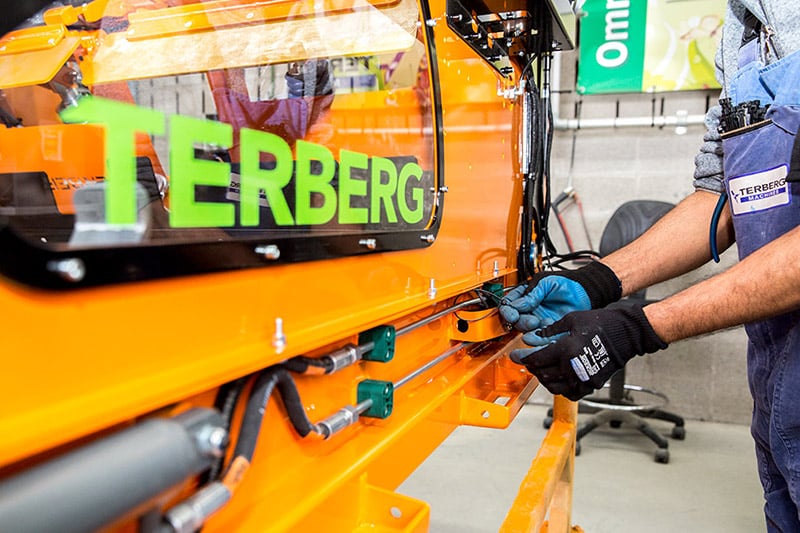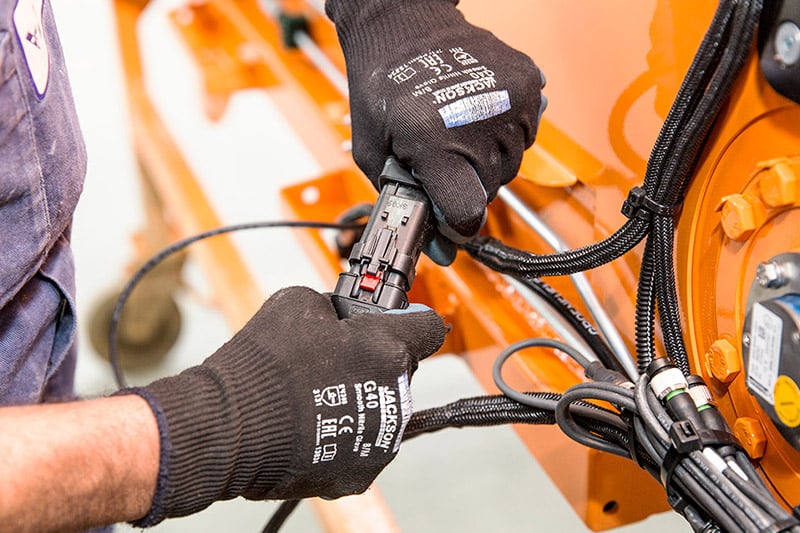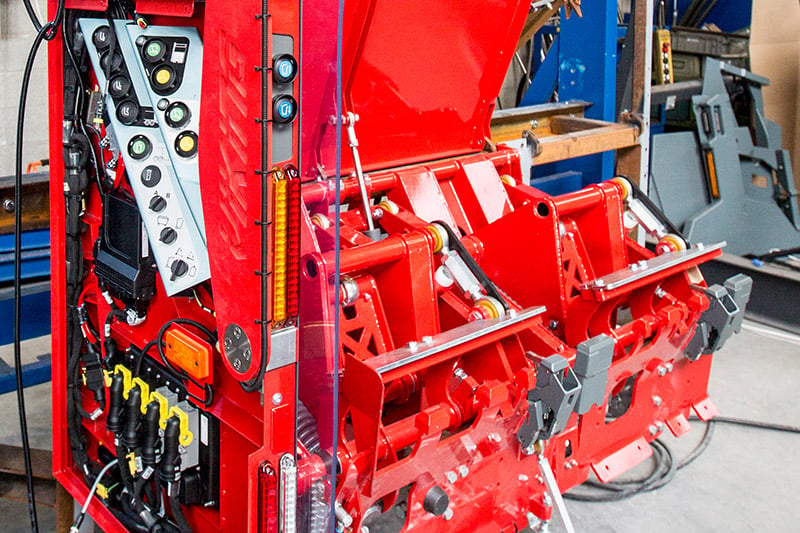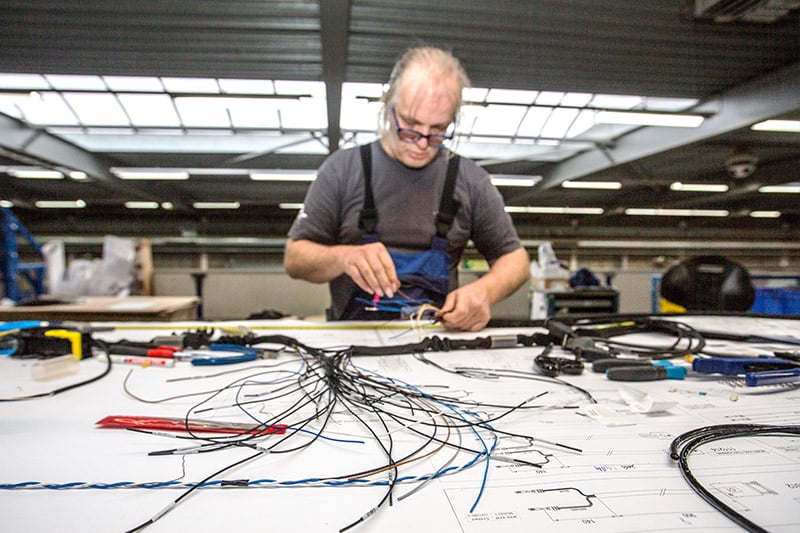
LIFTING THE LID ON THE TERBERG DIFFERENCE



Volumes of commercial and household waste and recyclable materials are growing throughout the world, and so is the need for efficient, material collection. Terberg RosRoca Group’s subsidiary, Terberg Machines, designs and manufactures a formidable range of bin lift systems to help meet this need. With models ranging from simple hydraulic systems to the most advanced fully automatic electric solutions, Terberg also offer an accompanying range of dynamic weighing and identification systems.
Based in IJsselstein, the Netherlands, Terberg Machines bin lift systems are distributed worldwide, sold predominantly through the Terberg RosRoca Group and its network of distributors. Earlier in 2020, the number of manufactured lift systems surpassed an amazing 25,000.
These systems are used to collect municipal and industrial waste, with models offering a low or high rave rail, electric or hydraulic power options, body-integrated or frame-mounted, manual, semi-automatic and fully automatic operation. The company's extensive expertise and customer focus means that the systems available meet almost every requirement. Product Manager Marcel Feitsma commented: We always aim to meet our customer's specific needs and start by analysing their application. Different public authorities, waste collection contractors, materials and countries can have completely different needs, and the trends in waste management make everything even more dynamic. Fortunately we offer solutions to handle pretty much any type and size of wheeled bin: small or large, with two wheels or four or with single or split lids.


The clearest trend is the increased adoption of automatic bin lifts since the advent of the wheelie bin. "We started producing automatic systems over thirty years ago. Then, as now, we aimed to support our customers with advanced technology to make their waste collection operations more efficient and safer, and reduce their Total Cost of Ownership (TCO). Automatic systems are better in both respects." Terberg Machines development of automatic technology all those years ago showed superb foresight as the demand for automatic bin lifts has greatly increased over the years. This is primarily due to the increasing cost of labour and explosive growth of the number of wheeled bins. "Nowadays, 90 percent of the systems we supply are automatic. Customers use them to empty 1,000 to 1,500 bins per day. It is only when emptying large bins of commercial waste that time is less relevant and manually operated systems can sometime prove more cost effective."
The demand for low-noise, environmentally-friendly bin lifts is another clear trend. Electric drive delivers on both counts and Terberg Machines is a leading innovator in this area, supplying electric bin lift systems powered by the 24 V vehicle battery, without the need, for PTO driven hydraulics. “If you use a conventional bin lift the truck engine has to increase its revs, leading to more noise and increase fuel consumption. However, our electric bin lifts typically produce 58 dBA or less and the noise level is almost constant. That is better for the loaders, it reduces the CO2 emissions and extends the collection window into early morning and late evening.”


Both public authorities and contractors want to operate their vehicles as efficiently and flexible as possible. For that reason they increasingly choose bin lifts which can handle several types of bin, or separate waste fractions.
Terberg Machines considers all parameters, such as bin size, pick-up height, lid shape and attachment system. The integrated bin lifts for the Olympus body are particularly impressive and can be tailored to the waste stream(s). The Olympus Twin Pack has two separate split bodies, compaction systems and bin lifts to collect two different waste streams at the same time. This reduces the number of collection rounds and lowers the TCO.
More and more municipalities are introducing pay-as-you-throw systems and therefore need bin lifts which can record weight and account information. This data can be used for invoicing or to assess contracts. Terberg Machines produces a range of advanced weighing and identification systems, tailored to the collection system, which can be fully integrated with telematics and reporting systems. Feitsma: “We are the only manufacturer in the world which supplies bin lifts integrated with certified and calibrated weighing and identification systems.” Ideally, these systems are integrated with an automatic bin lift system. However, they can also be retrofitted to compatible Terberg bin lifts.


Terberg Machines not only anticipates and responds to relevant trends and customer requirements, but also abides by set principles for design and production. Ergonomics and ease of operation are constantly optimised, while quality and safety take priority. Similarly, the company guarantees the highest construction quality by using robust designs, high-quality materials and reliable components such as smart sensors and maintenance-free bearings. “We make systems which are used intensively, with a technical lifespan of at least eight years. To ensure efficient operation with a minimum of downtime we innovate constantly and use state-of-the-art technology. For example, our 24 V technology and sealed electronics extend the lifespan of our systems and reduce the TCO.” In terms of safety, Terberg Machines meets the European safety and design requirements for lifting devices for refuse collection vehicles.
As a member of the NEN-EN1501-1/2/3/5 standards committee we monitor all the current developments. There is a range of measures to ensure the safety of the vehicle loaders, ranging from safety arms which shield the bins at the side, through to ensuring the safe attachment of the bins and the rear protection device. Absolutely nothing is left to chance.

Terberg Machines has an efficient and lean production process. All components are stocked for each stage of the process so large numbers of bin lifts can be produced efficiently. The production process includes five stages:
1. Fitting of mechanical components
2. Spray painting in a customer-specified colour
3. Fitting of smaller components
4. Fitting of electrical components
5. Adjustment and testing, and loading the software in any language
